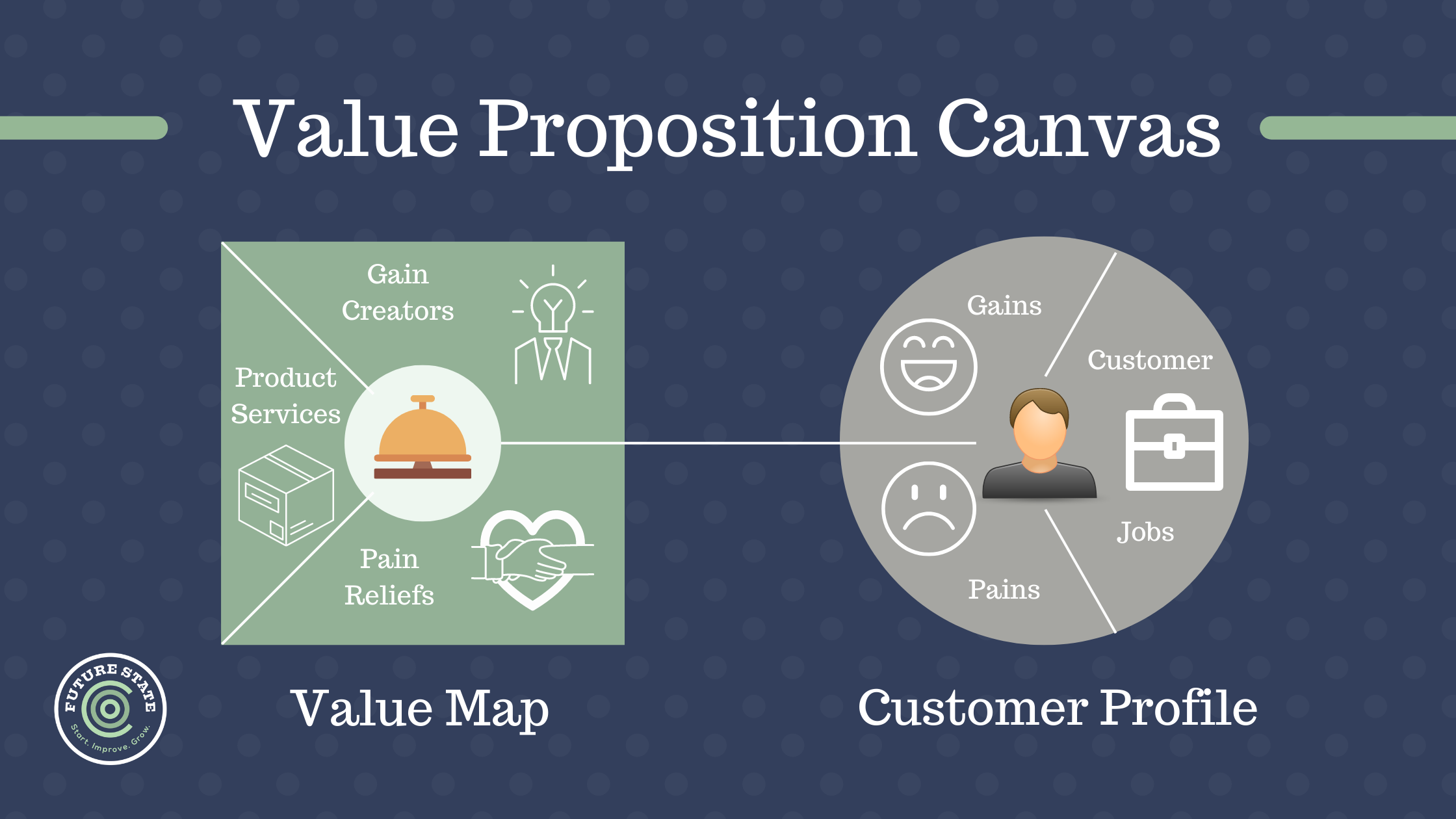Know Your Target Market and Value Proposition
Know Your Target Market & Value Proposition
As business owners, we can get so excited about our product or service that we can’t imagine anyone who wouldn’t want to buy it. We resist getting specific about our true target market because we don’t want to exclude any potential customers. However, when you try to be all things to all people and/or message your product or service in the same way to all people, you miss the opportunity to deeply connect with the potential buyers who can benefit the most from what you offer.
Why You Need to Know Your Target Market
To fulfill your organizational vision, you must get clear on your target market—the particular group of consumers at which your product or service is aimed.
When you know who your target market is, you can craft and distribute effective messaging to engage that market. You’ll avoid wasting time and money on the wrong channels because you’ll focus your marketing efforts and resources on attracting the right folks, and you can tailor your products’ specifications, packaging, and distribution to meet the specific needs of that target market. You need to know your target market before establishing strategies to serve the right people in the right ways.
Use Market Segmentation to Find Your Target Market
To home in on your target market (also known as a serviceable obtainable market, or SOM), start by identifying your total available market, which is all the customers who could conceivably use your product or service. Next, narrow that group down to the subset most likely to buy your product or service—the folks who want (or better yet, need) your product the most and are willing to pay for it.
A target market will have shared characteristics, such as age, income, and lifestyle. But don’t stop at those basic demographics. There are multiple ways to segment your available customers and dial in on those who most likely want and need your offering. Segmenting your market further—by, for example, common interests, similar spending habits, or shared values—also enables the fine-tuning of all organizational strategies, including marketing.
The four most common ways to segment your overall market are:
Geographics
Demographics
Psychographics
Behavioral
Market Segmentation
Value Propositions: How You Ease Your Target Market’s Pain
Knowing your target market is just the beginning, though. You must also be crystal clear on what you do for that target market. You need a strong value proposition: the way your product or service eases your customer’s pain and/or provides noticeable gains.
Here’s the classic value proposition formula:
Our [product/service] helps [target market] who wants to [jobs to be done] by [verb] [customer pain points] and [verb] [customer gain], unlike [competing value proposition].
Value Proposition Canvas
Start with your customer profile (remember, this customer is part of your target market!):
What sorts of “jobs” does your customer do (or want to do) that your product can help with?
What pain points can you help alleviate?
What gains would make a difference for them?
Then, focus on mapping your product to their needs:
What is your specific offering?
How does it create gains for your customers?
How does it alleviate their pain?
Why Value Propositions Matter
Your customers are looking for solutions that will directly or indirectly improve their competitive advantage. As part of the sales process, buyers expect to hear precisely how your products or services will contribute to their success—and why you’re uniquely qualified to deliver that value. Your value proposition serves as the foundation for all of your marketing efforts and defines what makes you different from alternative solutions.
Harvard Business School’s (HBS) Institute for Strategy and Competitiveness says this about value propositions:
“A value proposition defines the kind of value a company will create for its customers. Finding a unique value proposition usually involves a new way of segmenting the market. Often, a novel value proposition expands the market. For example, until the iPad came along, customers didn’t realize they wanted tablets—but Apple effectively created a new demand. While the value chain focuses internally on operations, the value proposition is the element of strategy that looks outward at customers, at the demand side of the business. Strategy is fundamentally integrative, bringing the demand and supply sides together.”
HBS offers this three-question variation on the standard approach to defining your value proposition:
What customer? (Which customer are you going to serve?)
Which needs? (Which needs are you going to meet?)
What relative price? (What relative price will provide acceptable value for customers and acceptable profitability to the company?)
It’s About the Value, Not the Formula
Whichever framework you choose, the important thing is not whether you have the right words in the right order but rather that you can ultimately convey your product vision to your market—that they know what value you offer them and why they should trust and pay you to deliver it.
Here are some value propositions that, in the end, don’t sound like they follow a formula, but certainly demonstrate the company’s thoughtful consideration of the value proposition elements:
Airbnb - Create a world where anyone can belong anywhere, providing healthy travel that is local, authentic, diverse, inclusive, and sustainable.
Slack – Be More Productive at Work with Less Effort
CrazyEgg – Website Behavior Tracking at an Unbeatable Price
LG - State-of-the-art Living Experience
Value Propositions vs. Mission Statements
Although they may look similar, it’s important to note that a value proposition is distinct from your mission statement. A mission statement highlights your objective as an organization. A value proposition, on the other hand, highlights what you offer and why your customers should choose it.
HubSpot, a value proposition expert, uses its own CRM platform to show the difference between a value proposition and a mission statement:
Value Proposition: “An easy-to-use CRM.”
Mission Statement: “To help businesses grow better.”
Both statements are essential parts of your overall vision.
Maintaining Your Organizational Drishti
Organizational Drishti—the yogic practice of using a focused gaze to maintain your balance—requires a clear understanding of your target market and your value proposition. To achieve your desired future state, you must know where you are going, how you’re going to get there, what you have to offer, who wants your offer, and what they will pay for it.
When combined with your big WHY and your values, these elements come together in a fully aligned strategic vision that will allow you to build your organization's foundations and scale the structure, culture, and operations in a way that sees your mission and vision come to life.



